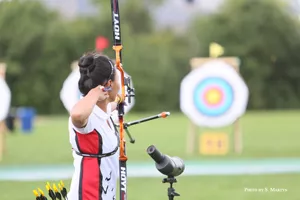
How do you feed 500 athletes?
When 520 hungry, tired young athletes arrive at the U of T Mississauga campus on Aug. 11, the staff from conference services and their facilities, food services, housekeeping and Chartwells colleagues will be ready and waiting.
The City of Mississauga is serving as this year’s host for the Ontario Summer Games, which run from Aug. 11 to 14 and feature athletes between ages 13 and 17. UTM is pitching in by hosting the basketball and field lacrosse competitions, and the campus is also feeding and housing those athletes, as well as the archery athletes and the associated coaches and officials.
“It should be lively and exciting, especially on the weekend, which tends to be quiet here,” says Sabrina Coccagna, the assistant director of conference and event services at UTM.
The visitors will be housed in the UTM residence halls and will eat their meals at both Oscar Peterson Hall’s Coleman Commons and at the temporary food court in the Davis Building. The Ontario Summer Games organizers have provided conference and event services with meal guidelines that detail the number of servings of protein, fruit, vegetables and carbohydrates appropriate for each meal, but the actual details have been left to UTM.
Feeding the athletes properly is essential to their success, says Kenneth Duncliffe, UTM’s director of athletics and recreation.
“In any high performance sport we consider proper nutrition to be an essential component for any athlete to reach their highest potential,” he notes.
Coccagna is confident that the UTM team is prepared to handle the challenge.

“We’ll offer a traditional style breakfast with dishes such as eggs and pancakes, along with a high protein item.” Lunches will probably feature sandwiches with lean protein, such as chicken, salads and “lots of fruit.” Dinners will offer protein, cooked vegetables, salad and a healthy dessert.
“We’ll vary the menu every day,” Coccagna says. “We want them to have a good experience and keep them interested in eating. Athletes need to eat a lot more than the average person.”
The food preparation won’t be the only challenge the UTM team faces in feeding the athletes. There are also the logistics to consider: meal times; who eats where; which teams need all three meals catered; and dining area setup.
She is excited at the opportunity the Games present, both for Mississauga and for UTM.
“It’s exciting for the city to have something like this and it’s great exposure for UTM. Anytime someone new comes here, they’re surprised by how big and beautiful our campus is.”
